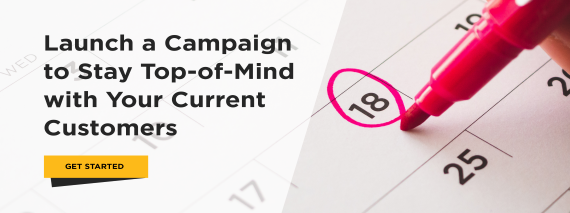This past weekend, I witnessed a remarkable redemption story play out. As you may remember, I enjoy motor racing in all forms. Part of racing is a delicate interplay between the driver, the team, the competition, the sponsor, and even the fans; all of those criteria push either toward success or failure, and the best of them can find the right mix, at some point, propelling them to the checkered flag. You’ll understand why I push the concept so much when I tell you how that parallels direct mail postcard campaign testing.
The team I watched this weekend got it right, and they won. But so many things went into the win; so much needed to be tweaked and adjusted along the way. They hit some dramatic lows early on before pulling ahead of their competition. It’s for that reason you have to test. You must commit to observing what isn’t working about your campaign, make those adjustments, and get back out there to measure your results.
To help you do just that, I’m listing these four rules for testing to boost your next campaign:
- Package Testing – Without pulling you into statistical analysis and other things that make peoples’ heads spin, think about package testing like this: you send one postcard design/offer to the folks in Group 1, and another to the folks in Group 2. You modify the postcard or messages to each group slightly so you can determine which change made the most impact, or no impact at all.
- A/B Splits – When conducting an experiment (and that’s essentially what this is), you use something called a ‘control.’ In our case, it can be a previously used postcard. In A/B Splits, you’re taking that control (A) – and the results it generated – and comparing them to the results generated by the new postcard (B). If the success of B outperforms that of A, then B becomes the new control and the postcard against which all new campaign results are then measured. But if the control continues to pull in substantial numbers, you’ll create a new (B) against which to test a change or update. Does that make sense?
- Track Your Responses – This is easier to do when sending out postcards with the hope of lead generation or increased sales. By adding something simple to your postcard, like a QR code, or by directing traffic to a landing page and asking them to input the code on the postcard, you can quickly determine the success rate of each test. Given better results for one postcard over another, you can then use that as the control to the larger targeted audience.
- Rollout the Winner – The results of the small batch testing are complete. The numbers around the control (A) versus the new postcard (B) are telling. That portion of your prospect or mailing list seems to have responded very well to (B), and it’s time to apply that same postcard to the larger population on your list. But wait…because you still need a portion of your list to continue testing (if that is of interest, you have the time, and the money to do so), an industry-accepted rule of thumb says you should never roll out the winning campaign to more than ten times the number of names in the test. Save some for the next round, is what we like to say.
The driver and team from this past weekend are new to one another this season. This wasn’t their first race together, and hopefully, they’ll have years of competition together. But it was the third race of the season. They were on the brink of success in previous races but fell short. This time, again, by testing what worked and what didn’t, but taking in their environment and judging against their peers, they made enough adjustments to their program, as you would in determining a winning postcard campaign, to celebrate victory.
Winning is never automatic. And success in your postcard campaign is subjective – it’s whatever your goal might be (e.g., more sales, more leads, more exposure). But you’ll never find full-throated success unless you test and test and test to determine what doesn’t make you successful.
Please contact our customer service team at 833-875-8800 if there is anything we can do to help you succeed.




